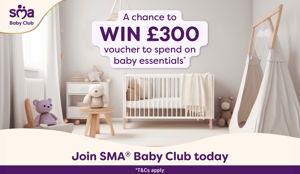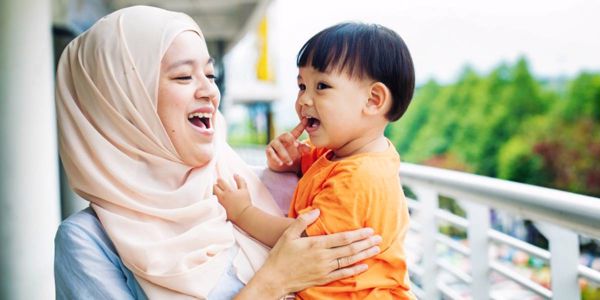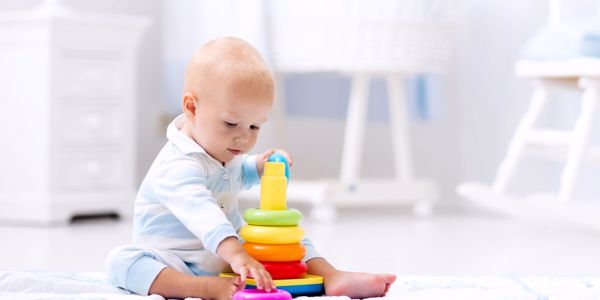As a parent, you eagerly await each milestone in your baby’s development, from their first smile to their first steps. One of the most exciting steps that comes early on is when your baby begins to babble. This adorable and often amusing phase is not only heartwarming but also a crucial part of your child's language development.
But what exactly is baby babble, and when can you expect to hear those first enchanting sounds? Here’s your guide to baby babble to understand what it is and what it means for your baby’s growth.
What is Baby Babble?
Baby babble or babbling refers to the repetitive consonant-vowel combinations that infants begin to produce around the age of four to six months. These sounds often include “ba-ba,” “ma-ma,” and “da-da.” While it may seem like random noise, babbling is a significant developmental milestone that indicates your baby is learning to communicate and make key sounds.
Babbling serves several important functions in a baby's development. Firstly, it helps to strengthen the muscles needed for speech. The repetition of sounds allows babies to practice controlling their vocal cords, lips, and tongue.
Babbling is also a form of social interaction. Babies often babble in response to voices or other sounds, showing early attempts at conversation. It is through these early sounds that your little one will begin to understand the patterns and rhythms of their native language.
Read More: When to Expect Baby's First Words
When Does Babbling Start?
Every baby develops at their own pace, but there are general timelines for when you might expect to hear those first babbles. Typically, babbling begins between four to six months of age. Initially, you might notice your baby cooing and making vowel sounds, such as “oo” and “ah.” This stage is often referred to as cooing or the pre-babbling stage.
By six months, you could start to hear more complex sounds, incorporating consonants into their vocalisations. This stage is characterised by repetitive syllables like “ba-ba” and “da-da.” It’s important to note that these sounds are not yet meaningful words, but rather an exploration of the baby’s ability to produce different sounds.
Around nine months, babbling becomes more varied and speech-like. Babies might begin to use a wider range of sounds and even combine different syllables, making their babble sound more like real speech. This is often referred to as canonical babbling. During this stage, babies also start to imitate the intonation and rhythm of adult speech, making their babbling sound much more conversational.
Read More: 10 Ways to Talk to Babies to Enhance their Language Skills
Encouraging Your Baby to Babble
As a parent, there’s a lot you can do to encourage your baby’s babbling and overall language development. Here are some tips to help your baby along this exciting journey:
- Talk to Your Baby Regularly: Engage in conversations with your baby, even if they can’t respond with words yet. Describe what you’re doing, name objects around you, and respond to their babbling as if you’re having a conversation. This helps your baby learn the patterns of speech and understand the concept of taking turns in conversation.
- Read Together: Reading to your baby is a fantastic way to expose them to new words and sounds. Choose books with bright pictures and simple text. The rhythm and repetition found in many children’s books can be particularly engaging for babies.
- Sing Songs and Nursery Rhymes: Songs and nursery rhymes are full of repetitive sounds and rhythms that can capture your baby’s attention. Singing to your baby can make learning language fun and enjoyable.
- Imitate and Expand: When your baby babbles, imitate their sounds and add new ones. For example, if your baby says “ba-ba,” you can respond with “ba-ba-ba” or “ba-ba ball.” This encourages them to continue experimenting with sounds and introduces them to new combinations.
- Use Gestures and Facial Expressions: Babies are keen observers of facial expressions and body language. Use gestures and exaggerated facial expressions when you talk to your little one. This helps them understand the emotional context of communication.
When to Be Concerned About Your Baby’s Babbling
While babbling is a normal stage of development, it’s important to remember that every baby is unique and will develop at their own pace. However, there are certain signs that might indicate a need for further evaluation.
If your baby isn’t making any sounds by six months, or if you have any concerns about their hearing or overall development, it’s a good idea to consult with your GP. Early intervention can be key in addressing any potential issues, and the reassurance of a check over can help restore your confidence.
Baby babble is an exciting part of your child’s language development. By understanding what babbling is and when it typically starts, you can better support and encourage your baby as they take their first steps towards learning to communicate.
Head here for more on how to choose books for your baby.






